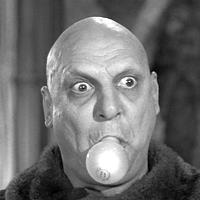Posted 14 October 2017 - 03:12 PM
I'll lay out my strategy here. Some may say that I'm working inside of too small of a box and I get that. This is a process that works nicely for me... a German & Czech lager fan. I may not be able to help with Belgians or Stouts but I'm sure that someone else can participate here.
So the water again: Ca 34, Mg 12, Na 13, Cl 21, SO4 27, Bicarb: 138.
My tools: Lactic acid, calcium chloride, calcium sulfate (gypsum), pH meter, gram scale, EZ_Water. I use EZ_Water just to get the balance now. I like Bru'N'Water but it's more involved and although I learned a few things from it, I don't use it much anymore. Cheers to Martin for designing it & sharing it with us.
I mash with about 5 gallons of water and do one sparge with about 2.5 gallons. Many, many of my beers come in around 5% and I don't make a lot of giant beers so this keeps things simple.
I have found that to get my mash pH into the 5.2 to 5.4 range, I need around 4ml of lactic acid in the strike water. The lactic acid helps to neutralize the bicarbonate. High levels of bicarb act like a buffer in water which makes it tough to lower the pH. The lactic acid neutralizes the bicarb so that we can get the pH of the mash where we want it. Grains play a role because darker malts have more acidity to help lower pH but I have found that they don't lower it by A LOT. Also, calcium chloride and calcium sulfate lower pH as well but again... not by A LOT. So about 4ml of acid goes into the strike water as its heating. Some people like acid malt here too. I have some and I occasionally use it but the acid is just more convenient.
Many people have said that you want about 50ppm of calcium. Some have said that any magic that would occur at 50ppm would also occur at 40ppm. Others have mentioned that upwards of 50ppm is even better. Calcium is supposed to be a yeast aid and it also helps with clarity. I decided to go for 60ppm of calcium and luckily I would get some calcium from calcium chloride and calcium sulfate because I'm starting with only 34ppm of ca. I have found that if I add about 3 grams of either of those two salts I will get to about 60ppm (EZ_Water confirms this). But how much of each to add? Chloride brings out a soft, round, full and smooth character in beer. Helles, festbier, dunkel, Vienna lager, etc. Sulfate brings out a crisp & sharp character: pale ales, IPAs, ESBs, Reds, etc. I have found that for gold beers like pilsner, helles, American Premium, etc., that I do not need anymore sulfate in the water than the 27ppm that I start with. I realize some people dump a bunch of sulfate in their pilsner water but for me (all of this is based on my preferences) I like lower sulfate. So for a gold lager like that, it's 3 grams of calcium chloride into the strike water. For something like a Vienna Lager, Dunkel, American Dark, I like to add some sulfate to keep the finish from getting too malty. I might go with .5 grams sulfate, 2.5 chloride. Or 1 gram sulfate and 2 grams chloride. As the styles go hoppier, I increase the sulfate and decrease the chloride but I never really go nuts with the sulfate... maybe I have a low tolerance for it or something. For something like a pale ale, IPA (which I don't make much), red ale, etc. I might go 1.5 grams of each which would give the water more sulfate than chloride because I'm starting with more sulfate. For a gold lager the final chloride number might be 65-70 while the sulfate stays where it is... 27. For a pale ale, ESB, Red ale, etc. I might have both numbers around 50-55ppm. The balance of the chloride & sulfate is what I'm looking at. There has been a lot of talk about "the chloride-to-sulfate ratio" and how it impacts beer. This process works well for me and I can taste the difference it makes in my beers. Some brewers have asked if 50ppm of both is the same as 250ppm of both... I don't know because I don't get my numbers that high but many brewers do. For those who jack up the numbers like that, please add your experience here.
Some of this requires some testing. You can "back-chloride" or "back-sulfate" a keg of beer (boil water, add some chloride or sulfate, add it to the keg). You can even take a pinch of either one and put it right into your glass of beer so you can see the differences.
Last thing: Far too much of one or the other can cause problems. I had an email from a guy who said his beers lacked depth and they were really harsh. He told me he added 5 grams of gypsum to his beers because his calcium was low and someone told him to add it. I suggested he get his water tested and it turned out that he had 5 times more sulfate in his water than chloride. That would make a really mouth-puckering beer... harsh and dry. I'm sure that some others here can post numbers for stouts and various Belgian styles.
Last: I do add another 2ml of acid to my sparge water to keep the bicarb down (it's neutralized at that point) but the calcium chloride and sulfate are only added to the mash... for me. I do not futz with the magnesium or sodium. Some people use magnesium sulfate (Epsom salt) but I have heard over and over that you don't need to add more Mg.
















